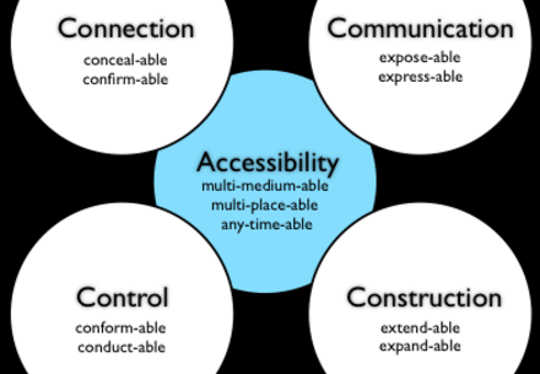
“Speak your mind” and “post your mind” are not the same thing. A study that investigated how messages containing different emotions spread across social networks found that “anger is more influential than other emotions like joy, which indicates that angry tweets can spread quickly and broadly in the network”.
The consequences of such angry posts can be dire. People have been publicly disgraced; lost their jobs and even faced criminal charges.
So why do such posts persist? My research suggests that the answer lies with three issues: the accessibility of technology, the spaces it provides for communication that isn’t face to face, and how this is skewing our ideas of connection.
But all is not lost: there are some basic rules you can apply that make sure you stay out of trouble and that you get the most out of social media.
The Facebook factor
With 1.8 billion users, Facebook has had a huge impact on how people connect, communicate and consume content. It was recently blamed for influencing the outcome of the US elections by facilitating the spread of fake news.
Facebook wasn’t designed to spread fake news – but this is an unintentional consequence of the environment. Understanding such consequences – what are known as “affordances” – is key to helping us better leverage technology for learning and to mitigate its risks.
In my research I explored the affordances of Facebook on student interaction and learning. An affordance is a “can do” opportunity of something, whether intentionally designed or unintentionally possible.
From this I developed the Actant-Activity Affordance model. It identifies five key affordances that interact in a competing set of tensions in online spaces: accessibility, communication, connection, control and construction.
 The Actant Activity Affordance model I developed from my research.
The Actant Activity Affordance model I developed from my research.
Accessibility, communication and connection are especially relevant when it comes to understanding why so many people vent their spleen on social media.
Accessibility
Accessibility, in my model, is the ability to access online spaces through multiple devices, in multiple places, at any time. This often results in “spur-of-the-moment” posts.
In the pre-technology era a person wanting to vent their anger would have to find the local newspaper’s address, write the letter, and then post it. This cooling down gap does not exist with technology.
New technologies with their ubiquitous access have changed us, largely without us realising it, from passive content consumers to active content producers. Many people have readily assimilated the benefits of permanent access to a publishing platform but haven’t been as quick to realise the responsibilities that come with our new role as content publishers.
Communication: no warm bodies
Technology now offers innumerable opportunities to both express ourselves and get exposure for our opinions. However, there are important differences between fireside chats and online posts.
Social presence theory teaches that “text based messages deprive computer mediated communication users of the sense that other warm bodies are jointly involved in the interaction”. Physical presence often tempers what people say, while the existence of a spatial gap between the poster and their online audience emboldens people to express themselves.
It’s natural to want to talk about how we feel. While some people may talk to friends, others resort to writing a private journal. However, the danger comes when online channels are falsely believed to be the “modern equivalent of writing a journal”.
Online channels are a convenient space for expression. But they come with another aspect of the communication affordance: exposure. A journal is private and can be discarded. Online posts are both permanent and public. Posting online is not the modern equivalent of writing a journal. It’s the modern equivalent of writing a letter to the editor.
Conflating the real world and online
The connection affordance, described in my model, relates to the opportunities that technology affords to develop connections between members of online spaces. In my experiment, students were given administrator status on a Facebook page. An unintentional affordance of this was that they could mask their identity when posting, which emboldened some to become more positively engaged in online class discussions.
However, a more subtle danger of connecting online, is the avatar syndrome; the conflation of real and online personas. People assume their online identities to a greater or lesser extent. This can be consciously, as in the case of role playing games, or subconsciously through our choice of profile pictures, photos and the content we choose to share about ourselves in social media spaces.
This avatar syndrome inevitably results in people making comments and sharing content that can have serious real world consequences.
How to stay out of the news and jail
Technology provides exciting opportunities to enhance how we teach and learn. In the coming years it’ll be important to keep educating school kids about the dangers of these new technologies. Here are some simple guidelines to remember when using social media, whatever your age.
Before you post it online, use the SPACE to THINK approach.
SPACE – Take these steps:
- S – Stop: Type it, but don’t post it.
- P – Pause: Wait for at least an hour, preferably sleep on it.
- A – Assess: THINK about what you’ve typed (see questions below)
- C – Confirm: Check with someone else to see what they THINK.
- E – Execute" If it passed the test click “send”. Otherwise delete it.
THINK – Ask yourself these questions:
- T: Is it true?
- H: Is it hurtful?
- I: Is it illegal?
- N: Is it necessary?
- K: Is it kind?
Being a little more thoughtful and circumspect about your social media presence will improve the experience for everyone. Think like a publisher – because in this brave new world, that’s exactly what we’ve all become.
![]()
About The Author
Craig Blewett, Senior Lecturer in Education & Technology, University of KwaZulu-Natal
This article was originally published on The Conversation. Read the original article.
Related Books:
at InnerSelf Market and Amazon


























